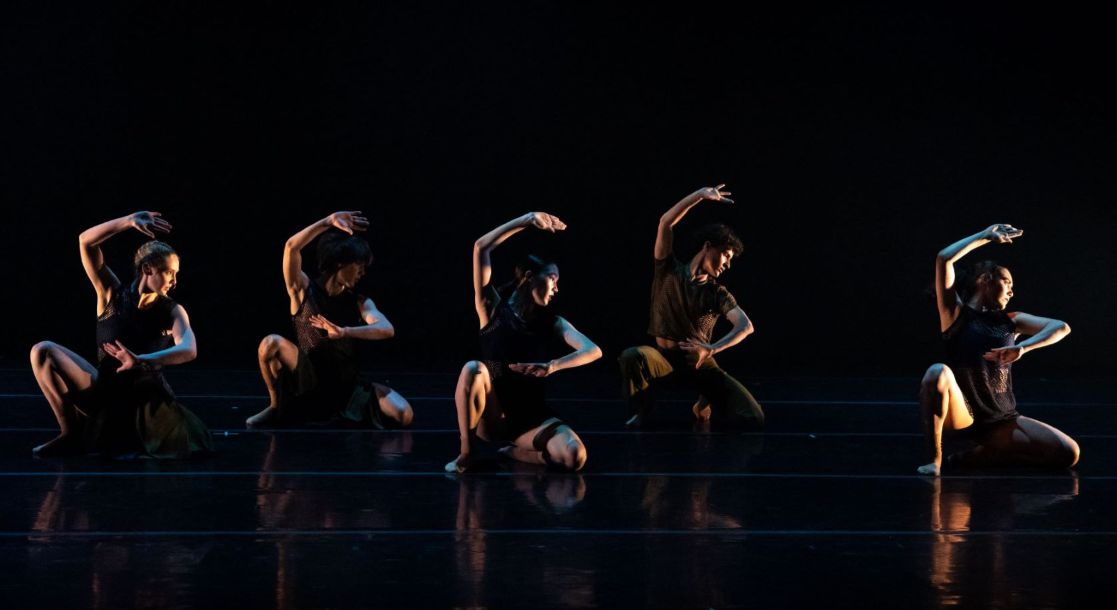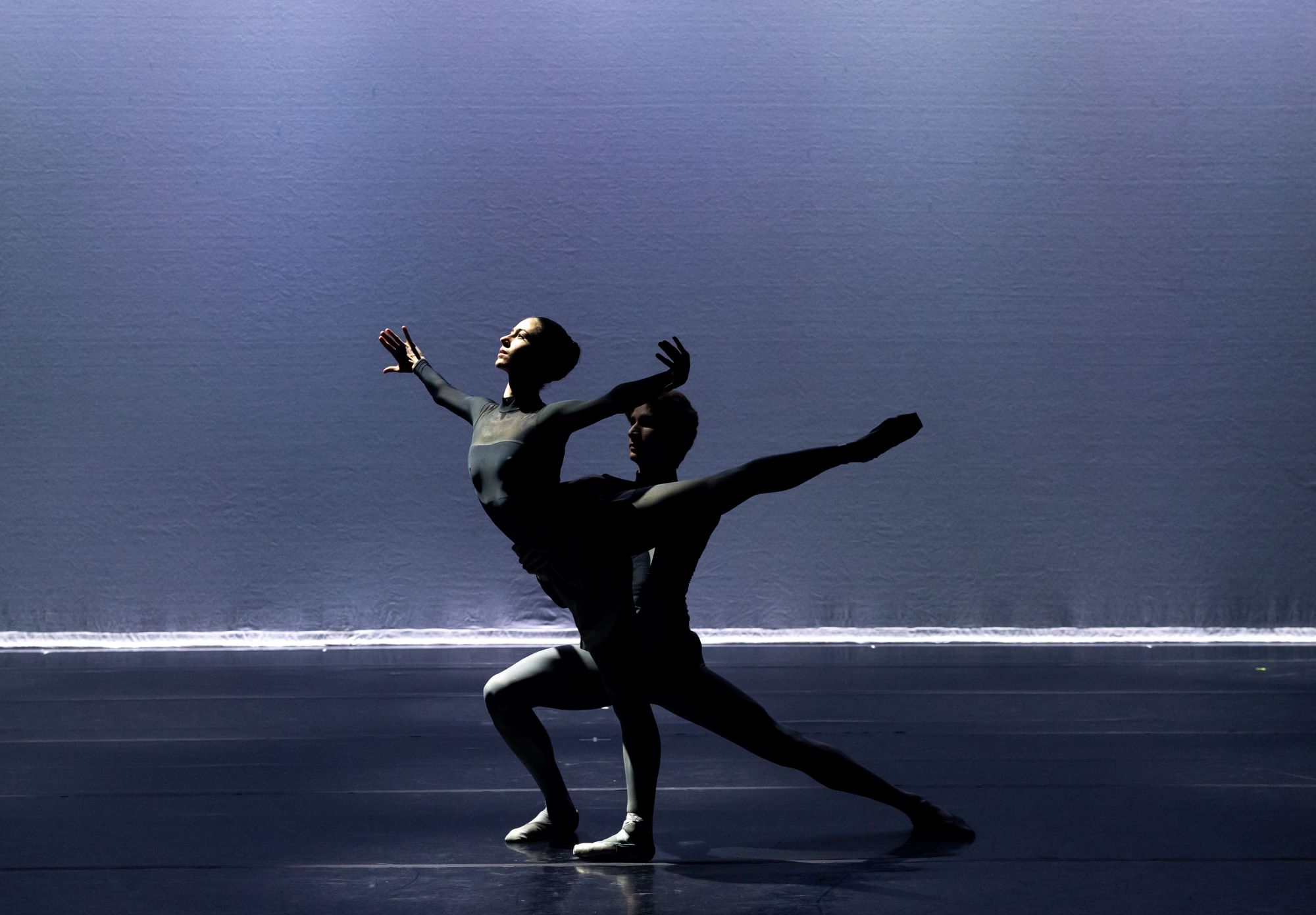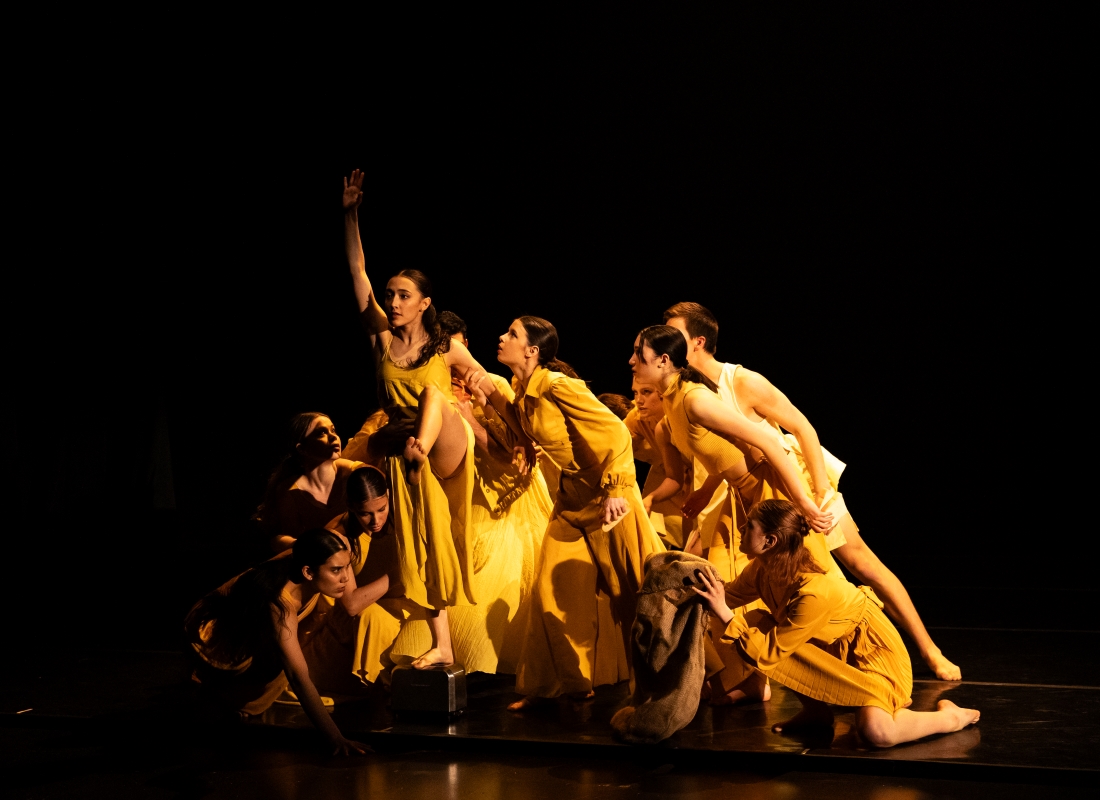
**** Highly Recommended The Joffrey Academy’s Winning Works, presented annually at the Museum of Contemporary Art, is a performance I await with great anticipation. It’s a chance to see brand new pieces by new choreographers, all ALAANA (African, Latinx, Asian, Arab and Native American) artist, performed by up-and-coming dancers who get a chance to shine. This year’s program was absolutely fabulous. 4 BIG Spotlights
The program began with Camellia, choreographed by Xavier Nuńez to lilting music composed by Andrew Bird, Oliver Davis and Ryuichi Sakamoto. Nuńez, a member of the Joffrey company, did the initial work for Camellia as a media art installation for State Street during the Covid shutdown. Nuńez recently choreographed Cosmic Rhythms at the Adler Planetarium.

The dancers of the Joffrey Conservatory – some in stripy green bodysuits representing stems and others in magenta and white representing flowers – followed the life cycle of a flower. With ethereal grace, the dancers became the flowers, growing, blooming, wilting and eventually dying, only to be born again next spring.
In Carried by Thought, choreographed by Martha Nichol to music composed by Ben Waters, the dancers, in stark black costumes, expressed thoughts and feelings as they became kind of moving sculptures – individuals as part of a whole, side-by-side partnerships and more. The piece left me breathless.

The Return Studies II, choreographed by Houston Thomas to music by John Cage, was a much more classical piece. The theme of Part I revolves around homecoming and returning, or even re-entering the studio after an 18-month hiatus. This piece is more about Thomas’s reconnection and homecoming to Chicago.
Most of the dancers wore red and black as they moved rapidly on and off stage in time with Cage’s drum-centric score. One couple, wearing gray and white, danced an exquisite pas de deux, begun without music.

Ocean, choreographed by Manoela Gonçalves, to music by Alice Phoebe Lou with additional composition by Nicolas Claude Balmer. Although I thought the choreography was stunning, the gritty vocals detracted from my enjoyment. The dancers represented the push-pull of the waves and the essence of the ocean beautifully.
The final piece, Burning Bread(s), choreographed by Jainil Mehta to music by East India Records with additional composition by Mehta, was very representative of India and the pressures on their traditional way of life. The dancers wore saffron robes as they carried and later hurled pieces of bread around the stage toward a lineup of toasters. Some parts of the piece were very reminiscent of Hindu weddings. Burning Bread(s) is a powerful piece filled with momentum.

